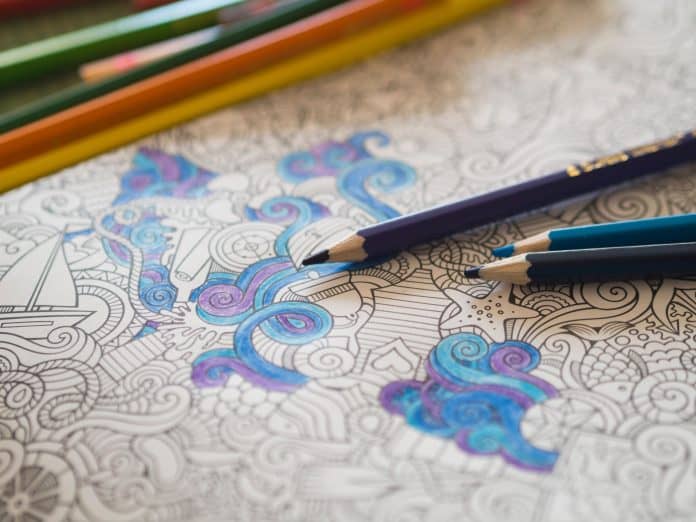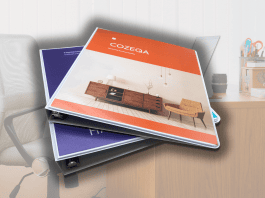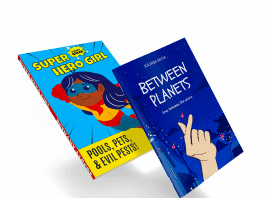Last updated on June 20th, 2024 at 01:58 pm
In an increasingly fast-paced and digitally-driven world, it can be challenging to find moments of tranquility and self-expression. However, there is one age-old pastime that continues to captivate people of all ages and provide an avenue for relaxation, creativity, and personal growth — coloring. What was once considered a childhood activity has evolved into a beloved art form embraced by people of all ages.

While store-bought coloring books are readily available, there’s something special about creating your own masterpiece. Whether you’re creating something just for yourself or a loved one or you’re hoping to sell your coloring book online, we’ve got you covered. In this blog post, we’ll delve into the process for how to print a coloring book, as well as how to publish it. Let’s get started!
How to Print a Coloring Book in 8 Steps
In this guide, we’ll walk you through how to design and print a coloring book, allowing you to bring your designs to life. From brainstorming ideas to selecting the right coloring book sizes, we’ve listed out every step in the process.
Step 1: Identify Your Target Audience
To create a coloring book that resonates, it’s crucial to identify your target audience early in the process. Understanding who will be using your coloring book will help you tailor the themes, illustrations, and overall design to their preferences.
Here’s how you can effectively identify your target audience:
- Research Existing Coloring Books: Begin by exploring the market and examining existing coloring books. Look for titles that align with your concept and see who they are targeting. Analyze their themes, complexity levels, and art styles to gain insights into popular trends and audience preferences.
- Consider Age and Skill Level: Determine the age range that your coloring book will cater to. Are you creating a book for young children, teenagers, adults, or a specific niche group? Consider the skill level as well, whether you’re targeting beginners, intermediate colorists, or experienced artists. This information will influence the complexity of your designs and the level of detail you incorporate.
- Conduct Surveys or Focus Groups: Engage your potential audience through surveys or focus groups to gather direct feedback. You can use online platforms like social media to ask questions about their coloring preferences, favorite themes, preferred art styles, and desired level of intricacy. This firsthand information will provide invaluable insights into their expectations and help you fine-tune your coloring book.
- Seek Feedback from Peers or Experts: Share your concept with trusted individuals in your network who can offer constructive feedback. Art teachers, fellow artists, or individuals experienced in the coloring book industry can provide valuable input on how to best target your intended audience and make your book appealing to them.
- Consider Demographics and Interests: Take into account the demographics and interests of your target audience. Are they nature enthusiasts, animal lovers, or fans of a particular genre? Incorporate themes and subject matter that align with their interests to make your coloring book more engaging and relatable.
By identifying your target audience, you can create a coloring book that caters specifically to their interests, skill level, and preferences.
Step 2: Brainstorm and Plan Your Coloring Book
Now for the fun part! Brainstorming and planning your coloring book is an exciting and creative process that allows you to bring your artistic vision to life. Here are some steps to help you get started:
- Define your theme: Choose a focus for your coloring book that aligns with your interests and target audience. It could be nature, animals, fantasy, or any other topic that inspires.
- Research: Look for images, photographs, or artwork that can inspire your coloring book pages.
- Create rough sketches: Draw rough outlines of your coloring book pages. Experiment with different compositions and designs to ensure variety and engagement for your audience.

Step 3: Design Your Coloring Book Pages
Now that you have your concept and some rough sketches down, let’s get to the nitty gritty. If you’re wondering how to make a coloring book your audience will love, there are several design-related considerations to keep in mind. But the first and most important is how to make your design engaging. Ask yourself what would capture the hearts and minds of your target audience and keep them glued to the pages.
Consider the following design elements:
- Diverse subjects within your theme: Offer a variety of subjects that cater to different interests and preferences. For example, if your theme is city living, include a mix of buildings, parks, restaurants, transportation, or whatever fits your audience’s interests.
- Finding balance: Strike a balance between simple and intricate designs. Some pages can feature larger, easier-to-color areas, while others can have more intricate details for those seeking a challenge. This variety keeps users engaged and accommodates different skill levels.
- Patterns and textures: Incorporate patterns and textures into your coloring book pages to add depth and visual interest. These elements can enhance the coloring experience and provide a unique touch to your designs.
- Negative space: Utilize negative space effectively to provide a sense of balance and clarity in your designs. Negative space allows for easier coloring and gives room for your customers to showcase their creativity.
- Inspirational quotes or messages: Consider incorporating positive affirmations and messages related to your theme. These can enhance the coloring experience by providing a deeper emotional connection and encouraging self-expression.
- Create interaction: Design pages with interactive elements, such as hidden objects, puzzles, or mazes. These features provide an additional layer of engagement and make the coloring experience more interactive and enjoyable.
- Pay attention to composition: Ensure that the elements within each page are well-balanced and harmonious. Consider the placement of different design elements to create a visually pleasing composition.
Have some friends or family willing to be your guinea pigs? Try out your designs with your sample audience to gather feedback. Use their input to refine your designs and make adjustments as necessary.
Step 4: Select Coloring Book Sizes

While the standard coloring book size is 8.5×11, coloring book sizes vary as much as the content. Selecting suitable coloring book sizes is essential when creating your coloring book. The size of your coloring book can impact its usability, portability, and overall appeal.
Here are some factors to keep in mind when determining the size of your coloring book:
- Consider your target audience: Think about the age group you’re targeting and their preferences. For children, a smaller and more manageable size, such as 8×8 inches or a standard coloring book size, may be suitable. For adults, a larger size, such as 9×12 inches or 11×14 inches, can provide more space for intricate designs and finer details.
- Coloring mediums compatibility: If your audience is more likely to use colored pencils, a smaller coloring book size could be appropriate. However, if markers or watercolors are popular, a larger size may be better to accommodate the different techniques and prevent bleed-through.
- Portability: Smaller coloring book sizes are easier to carry around and are more convenient for on-the-go audiences, such as during travel or commutes. A pocket-sized coloring book is an excellent option for a compact, portable coloring experience.
- Visual impact: The size of your coloring book can impact the visual impact of your designs. The larger size allows for more intricate details and a grander scale, which can enhance the overall visual appeal of your coloring book.
- Printing and production costs: Consider the practical aspects of printing coloring books. Larger sizes may require more expensive materials and incur higher production costs. Consider your budget and weigh it against the desired size of your coloring book.
Step 5: Select High-Quality Paper
Selecting high-quality paper for your coloring book is crucial to ensuring a satisfying coloring experience for your users. The right choice of paper can enhance the vibrancy of colors, prevent bleed-through, and provide a pleasant texture for coloring.
Some factors to consider when selecting paper include:
- Weight and thickness: When choosing the best paper weight for your coloring book, look for paper that is heavyweight and thick enough to prevent color bleeding from one page to another. Most coloring books have a paper weight of around 70-100 lbs (100-150 gsm).
- Texture: Do you want glossy or matte? A slightly textured or toothy surface can provide a better grip for colored pencils, allowing for smoother and more controlled coloring. However, a smoother paper may enable finer details if your coloring book includes intricate designs.
- Color vibrancy: Coloring book paper should enhance the vibrancy and richness of colors. The paper should have good ink absorption properties to prevent smudging and fading.
- Durability: The paper should withstand repeated erasing and blending techniques without tearing or easily wearing down.
- Environmentally-friendly: If eco-friendliness is important to you or your target audience, choose paper sourced from sustainable and responsibly managed forests, or consider recycled paper options.
- Cost: Balance paper quality with your budget. Higher-quality paper may be more expensive, but it can significantly enhance your customers’ overall experience and satisfaction.
Step 6: Choose the Right Book Binding
You’ve found your audience, designed your book, and found the right paper. But our journey in learning how to print a coloring book isn’t over. Book binding is what brings everything together — literally. The type of binding you select will impact how well the pages lay flat, how easily the book opens, and how securely the pages hold together.
Some common standard binding options include:
- Perfect binding uses adhesive to bind the pages together along the spine. It provides a clean, professional look and allows the book to lie flat when opened.
- Spiral binding uses curved wire inserted through punched holes along the edge of the pages. Spiral binding allows for easy page-turning and provides excellent lay-flat capabilities, making it ideal for coloring books.
- Wire-O binding inserts a double-loop wire through punched edge holes on the paper edges. It’s a durable bind that makes it easy to turn pages, and the book can lay flat when opened.
- Saddle stitching is commonly used for thinner coloring books. It involves stapling the pages together along the centerfold. While saddle stitching is cost-effective, it may not allow the book to lay flat.
Step 7: Partner with Coloring Book Printing Services
Now that your coloring book is ready for printing, it’s time to find a reliable and reputable printing service. Consider factors such as paper quality, pricing, turnaround time, customer reviews, and additional services like binding options.
Printivity is an online custom printing company specializing in marketing and promotional print products. We are the go-to experts for coloring book printing, helping our customers successfully take their projects from conception to completion. Check out our book printing services!
Step 8: Getting Your Coloring Book Published
Once you’ve completed your coloring book design and printing, the final step is to publish it for purchase. When it comes to how to get a coloring book published, you can either find a publisher or self-publish:
- If you choose traditional publishing, research companies specializing in these products. Check their websites, online directories, and industry resources to find publishers actively seeking new coloring book projects. Review their submission guidelines and prepare a professional book proposal, including a sample of your work. Then submit your proposal to publishers along with a query letter and wait for their response.
- If self-publishing, consider using an online platform like Printivity to start the process. Our platform lets you collaborate with editors, designers, and printers to finalize the book’s production. We can answer questions and even share marketing tips. Our team can help set you up for success on self-publishing platforms like Amazon or other eCommerce distribution services.

How Much Does It Cost to Publish a Coloring Book?
The cost of publishing a coloring book can vary depending on factors such as the number of pages, paper quality, and any additional features like special finishes or bindings. At Printivity, our book printing costs start as low as $9!
Bring Your Vision to Life with Printivity
Now that you know how to print a coloring book, what are you waiting for? Offering fast turnaround times and competitive pricing, Printivity’s custom coloring book printing services feature all the tools and the expertise you need to launch your project. From book printing and catalog printing to promotional materials like flyers and business cards, we can help you print and market your coloring book. Talk to our expert design and production team today to learn how we can help you bring your ideas to life.




